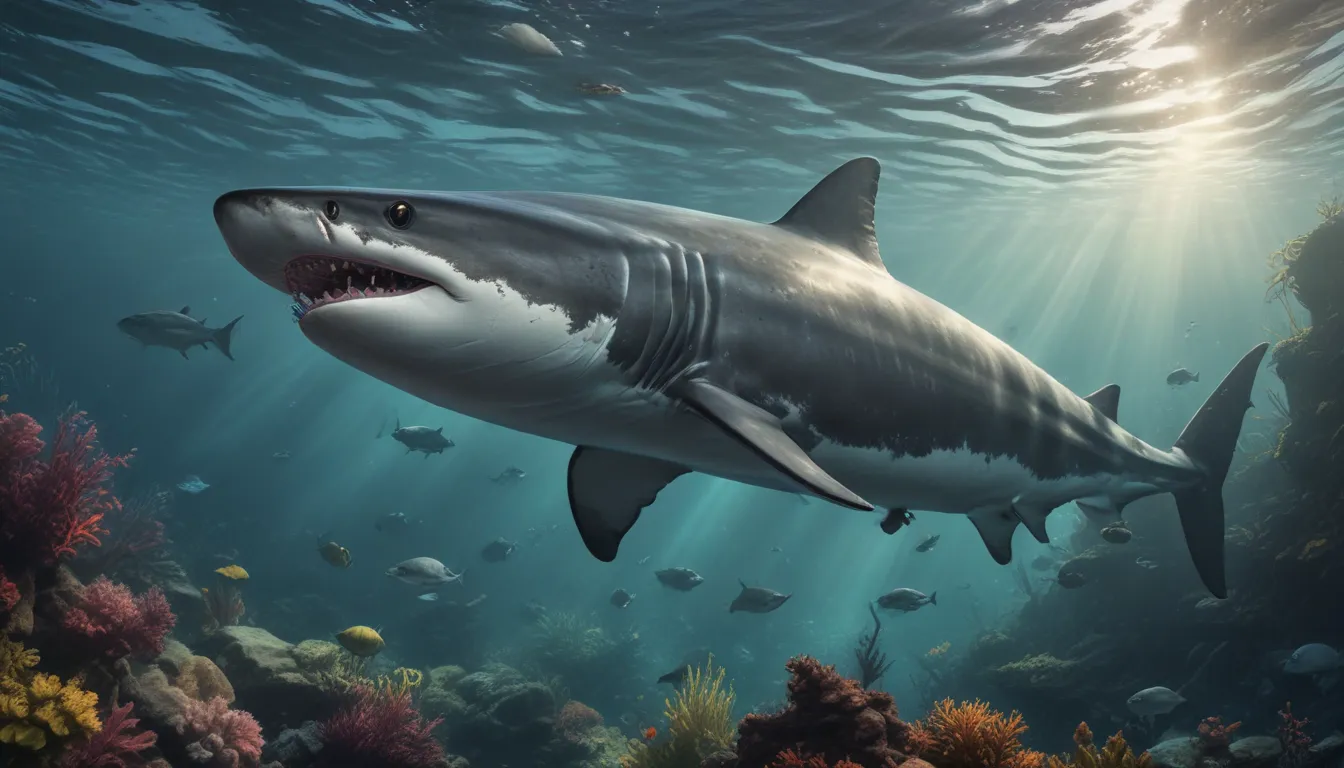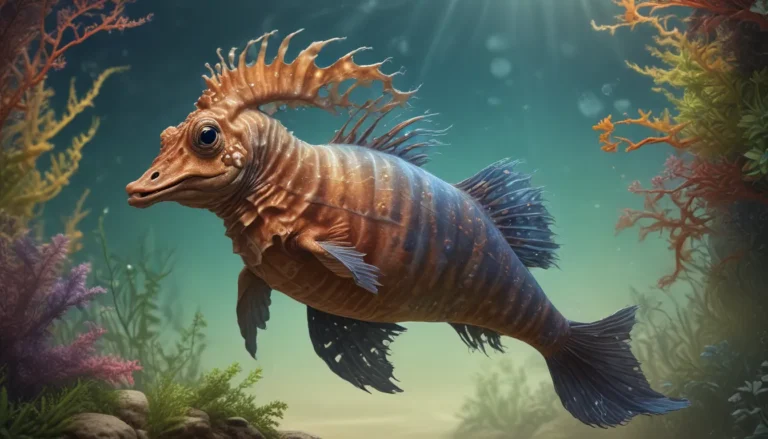The pictures we use in our articles might not show exactly what the words say. We choose these pictures to make you interested in reading more. The pictures work together with the words but don’t take their place. The words still tell you the important facts.
When it comes to the captivating creatures of the deep blue sea, few can mesmerize us quite like the thresher shark. With its long, distinctive tail and sleek body, this enigmatic predator is truly a wonder to behold. But beyond its striking appearance lies a world of fascinating facts and secrets waiting to be uncovered.
Join us on an exciting journey as we delve deep into the realm of thresher sharks and unravel 18 interesting facts about these incredible creatures. From their unique hunting techniques to their remarkable adaptations, you'll gain a newfound appreciation for the marvels of nature that thresher sharks represent.
So, prepare to be amazed as we explore the ocean's depths to unlock the mysteries of thresher sharks. Whether you're a marine enthusiast or simply curious about the wonders of the animal kingdom, these facts are sure to leave you in awe of these majestic predators.
Uncovering the Wonders of Thresher Sharks:
- Thresher sharks possess long tails used for hunting and stunning prey, with their fast swimming abilities making them elusive apex predators in marine ecosystems. Unique features like large eyes, exceptional hearing, and live birth set them apart, but they face threats from overfishing and pollution, emphasizing the need for conservation efforts to ensure their survival.
The Enigmatic Tail of the Thresher Shark
The thresher shark is renowned for its distinctive long, whip-like tail that can be as long as its body. This tail serves a crucial role in stunning and capturing prey, showcasing the shark's efficient hunting abilities.
Unveiling the Thresher Shark’s Hunting Strategy
An ambush predator at heart, the thresher shark utilizes its long tail to slap schools of fish, rendering them stunned and easier to catch. This unique hunting technique, known as "tail-slapping," highlights the shark's ingenuity in securing its meal.
A Glimpse into the Speed of Thresher Sharks
With speeds of up to 30 miles per hour, thresher sharks are among the fastest swimmers in the ocean. Their streamlined bodies and powerful tails propel them swiftly through the water, showcasing their agility in pursuit of prey.
Diving into the Depths with Thresher Sharks
Thresher sharks exhibit impressive diving capabilities, reaching depths of up to 500 meters (1,640 feet) in search of sustenance. This deep-sea exploration showcases their adaptability and resilience in varying ocean environments.
Navigating Mysterious Migration Paths
Highly migratory creatures, thresher sharks embark on long-distance journeys across oceans, following warm currents for food and mating opportunities. Their nomadic lifestyle adds to the allure of these elusive predators.
Embracing the Mystery of Elusive Thresher Sharks
Known for their elusiveness, thresher sharks are rarely sighted by humans due to their preference for deep waters and vast ocean territories. This enigmatic nature adds to the allure of these majestic creatures.
The Elegance of Sleek and Streamlined Bodies
Thresher sharks boast hydrodynamic bodies that facilitate swift movement through water with minimal resistance. Their sleek physique allows for efficient hunting and navigation in the ocean's depths.
Insight into the Vision of Thresher Sharks
Equipped with large eyes, thresher sharks possess excellent vision in low-light conditions, aiding them in locating prey and navigating the darkness of the ocean depths. Their keen eyesight is a testament to their hunting prowess.
Unraveling the Acoustic Abilities of Thresher Sharks
With highly developed auditory systems, thresher sharks can detect low-frequency sounds and vibrations to locate prey and communicate with fellow sharks. This exceptional hearing showcases their sensory adaptations for survival in the marine environment.
Appreciating the Diverse Diet of Thresher Sharks
Feeding primarily on small schooling fish like sardines, mackerel, and anchovies, thresher sharks boast a varied diet that includes squid and other cephalopods. Their omnivorous nature highlights their role as apex predators in the oceanic food chain.
Witnessing Live Birth in Thresher Sharks
Thresher sharks are viviparous, giving birth to live young rather than laying eggs. Females nurture embryos inside them, culminating in the birth of fully formed shark pups, showcasing the unique reproductive cycle of these marine marvels.
Embracing the Longevity of Thresher Sharks
With lifespans of up to 20 years or more, thresher sharks mature slowly and reproduce over many years, contributing to their population's sustainability. Their long lifespan underscores their resilience in the face of environmental challenges.
Addressing the Threats to Thresher Sharks
Highly valued for their meat, fins, and oil, thresher sharks face threats from overfishing and bycatch, jeopardizing their populations. Conservation efforts are essential to protect these apex predators and preserve marine ecosystems.
Upholding Conservation of Thresher Sharks
National and international conservation regulations safeguard several species of thresher sharks, ensuring their survival and promoting sustainable fishing practices. These protective measures are crucial for mitigating threats to their existence.
Sensitivity to Pollution: A Concern for Thresher Sharks
Like many marine species, thresher sharks are vulnerable to the adverse effects of pollution. Chemical pollutants and marine debris can harm their health and disrupt their ecosystems, emphasizing the need for marine conservation efforts.
Essential Role in Marine Ecosystems
As apex predators, thresher sharks play a vital role in marine ecosystems by regulating the populations of smaller prey species and contributing to overall biodiversity. Their presence is essential for maintaining the delicate balance of oceanic life.
Curiosity and Intelligence: Traits of Thresher Sharks
Thresher sharks exhibit signs of curiosity and intelligence, displaying problem-solving abilities and investigative behavior in captive environments. Their cognitive functions highlight the complexity of these marine predators.
Standing the Test of Time: Evolutionary History of Thresher Sharks
Thriving for millions of years, thresher sharks have adapted and evolved to their ocean habitats, showcasing unique characteristics and behaviors shaped by their long evolutionary history. Their resilience is a testament to their endurance in changing environments.
Conclusion: A Tribute to Thresher Sharks
Thresher sharks stand out as truly fascinating creatures, boasting a set of unique attributes that set them apart in the animal kingdom. From their striking long tails to their innovative hunting strategies, there is much to admire and learn about these magnificent predators.
Whether through their mesmerizing tail-slapping maneuvers or their annual migrations, thresher sharks continue to captivate scientists and nature enthusiasts worldwide. Understanding the intricacies of these marine marvels provides insight into the interconnectedness of our oceans and underscores the importance of conservation efforts to safeguard their habitats.
As we embark on a journey of discovery and appreciation for the diverse species that inhabit our planet, thresher sharks remain a source of admiration and wonder. Let us cherish these remarkable creatures and commit to preserving their legacy for future generations to marvel at.
FAQs: Exploring the World of Thresher Sharks
Q: How long can a thresher shark’s tail grow?
A: Thresher sharks boast tails that can grow up to lengths equal to or even greater than their bodies, with average tail lengths ranging from 6 to 7 feet.
Q: What is a thresher shark’s hunting technique?
A: Thresher sharks utilize their long tails to stun prey, swimming in circles around fish schools and delivering powerful tail slaps to immobilize their prey for consumption.
Q: How fast can thresher sharks swim?
A: Thresher sharks exhibit impressive speeds of up to 30 miles per hour, utilizing their streamlined bodies and robust tails to navigate through water swiftly in search of food.
Q: Where can thresher sharks be found?
A: Thresher sharks inhabit tropical and temperate waters globally, frequenting coastal regions, coral reefs, and open ocean environments. Popular locations for thresher shark sightings include the Philippines, the Maldives, and Costa Rica.
Q: Are thresher sharks dangerous to humans?
A: While thresher sharks are formidable predators, they pose minimal risk to humans, with no recorded instances of unprovoked attacks. Respectful encounters and caution are advised when encountering thresher sharks or any other shark species in the wild.
Embracing Knowledge and Wonder:
At the core of our mission is a dedication to offering enriching and reliable content that engages and educates our audience. Every fact shared on our platform is contributed by individuals like you, culminating in a diverse tapestry of insights and information. Rest assured, our team of editors meticulously reviews each submission to uphold the highest standards of accuracy and authenticity.
Trust in our commitment to quality as you embark on a journey of exploration and discovery alongside us. Join us in celebrating the beauty and complexity of the natural world, learning and growing with each captivating fact and revelation we share. Together, let's uphold a sense of wonder and reverence for the diverse species that inhabit our planet, fostering a deeper connection to the marvels of nature that surround us.






